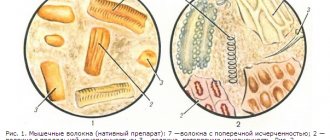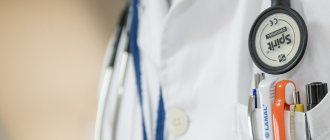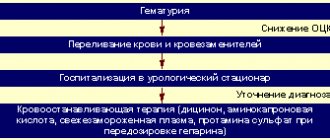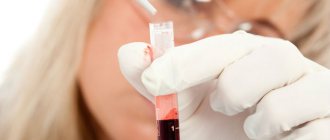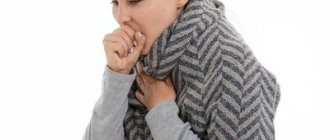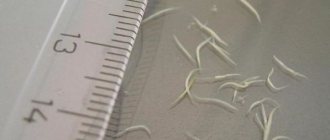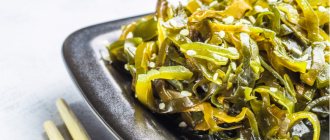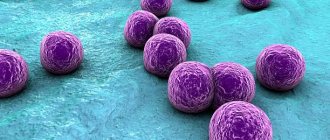General analysis (coprogram)
- 2 days before collecting biomaterial, discard tomatoes, tomato juice, pasta, beets, blueberries, pomegranates and other vegetables and fruits containing dyes.
- For 3 days, stop taking antibiotics, laxatives, and drugs that cause changes in intestinal motor function. Do not use rectal suppositories, ointments, or oils.
- Do not eat exotic fruits, vegetables and foods that are not typical for your diet as a whole. Do not overeat, exclude fatty, spicy, pickled foods.
- If you are taking medications containing iron and bismuth, they must be discontinued 2 days before stool collection.
Attention. After radiography with a contrast agent (barium), collect feces for coprogram no earlier than 7–10 days after the examination. Women are not recommended to take the test during menstruation.
Procedure for collecting stool:
Collect stool for examination in the morning, on an empty stomach. If this is difficult, you can prepare the sample in advance, but no more than 8 hours before submitting it to the laboratory. In this case, store the sample in the refrigerator (do not freeze!).
- Carry out hygiene procedures and first urinate in the toilet and flush.
- Place sterile paper (or an ironed sheet) or a disposable plastic plate in the bowl or bottom of the toilet and perform a bowel movement.
- Collect feces immediately after defecation from different places in a single portion with a special spoon mounted in the lid of a plastic container in a volume of 1–2 g (no more than 1/3 of the container’s volume). Avoid contact with urine and pieces of undigested food.
- Deliver the sample to the laboratory on the day of collection. Before delivering the sample to the laboratory, the container with stool should be kept in the refrigerator at 2–4 °C. Storage at 2-8 °C is allowed - up to 72 hours.
Indications for the purpose of analysis
Examination of stool for blood hidden in it is prescribed for the following patient complaints:
- Constant/recurrent abdominal pain;
- frequent symptoms of dyspeptic disorder - nausea, vomiting, heartburn;
- regular diarrhea;
- unexplained weight loss.
Testing stool for blood present in its composition is prescribed to confirm the diagnosis, for example, peptic ulcer or erosive gastritis. The overall goal of the analysis is to identify hidden damage to the mucous membranes of the stomach or intestinal tract.
Dysbacteriosis, intestinal group
To obtain the correct result, material for research is taken before the start of antibacterial therapy or in the intervals between courses of treatment, but not earlier than 2 weeks after its completion.
Attention Do not collect feces from diapers. For infants, collect material from a sterile diaper or pre-ironed onesies. If liquid feces are collected, it can be collected by placing an oilcloth under the baby.
Collection rules
- Feces should be collected in the morning, on an empty stomach.
- Carry out hygiene procedures and first urinate in the toilet and flush.
- Place sterile paper (or an ironed sheet) or a disposable plastic plate in the bowl or bottom of the toilet and perform a bowel movement.
- Collect feces immediately after defecation from different places in a single portion with a special spoon mounted in the lid of a plastic container in a volume of 1–2 g (no more than 1/3 of the container’s volume). Avoid contact with urine and pieces of undigested food.
- Deliver to the laboratory on the day of collection.
The sample can be stored for no more than 2 hours at room temperature; no more than 6 hours at 2-8 °C, more than 6 hours - frozen.
Sample collection
Figure 1. Hemoccult slide
Prepare everything you need
You will need the following:
- Hemoccult® slide;
- applicator stick;
- clean dry container;
- trash bin.
Instructions
- Prepare everything you need. Place all items in the bathroom so that you can easily reach them.
- Remove the Hemoccult slide from the paper envelope. Set the envelope aside.
- Do not place the Hemoccult slide and applicator wand on the edge of a sink, bathtub or toilet. They cannot be wet.
- Keep Hemoccult slides at room temperature away from heat and light.
- Check that the card contains your name, date of birth and medical record number. If this information is not listed on the card, write it down.
- Fold down the large front flap of the Hemoccult slide. You may notice a light blue discoloration of the paper in the squares above fields A and B. This will not affect the test results.
- Sit on the toilet as usual to have a bowel movement (big pee). Use a clean, dry container to catch the stool before it touches the toilet water.
- Using the end of the applicator stick, take a stool sample. Place a thin smear of stool inside square A on the Hemoccult slide (see Figure 1).
- Using a stick, take a second sample from another part of the stool. Apply a thin smear of stool inside square B.
- Throw the stick in the trash.
- Close the flap of the Hemoccult slide and place it back into the paper envelope. Do not put it in waterproof packaging such as a plastic bag. Store it at room temperature away from light, children and pets.
- Dispose of the contents of the stool container into the toilet. Flush the toilet.
- Wash your hands. Wet your hands with warm water and scrub them with soap for at least 20 seconds. Rinse your hands.
Repeat these steps to collect samples on days 2 and 3. Write the date of collection next to each sample.
to come back to the beginning
Protozoa and helminth eggs
To obtain the most reliable results, three stool examinations are recommended with an interval of 3–7 days.
Attention You cannot collect stool earlier than 3 days after an enema, an X-ray examination of the stomach and intestines, or a colonoscopy. The day before, do not take laxatives and drugs that affect intestinal motility (belladonna, pilocarpine), activated carbon, iron, copper, bismuth, barium sulfate, use fat-based rectal suppositories. Women should not collect stool during menstruation.
Collection rules
- Feces should be collected in the morning, on an empty stomach. If this is difficult, you can prepare the sample in advance, but no more than 8 hours before submitting it to the laboratory. In this case, the sample should be stored in the refrigerator (do not freeze!).
- Carry out hygiene procedures and first urinate in the toilet and flush.
- Place sterile paper (or an ironed sheet) or a disposable plastic plate in the bowl or bottom of the toilet and perform a bowel movement.
- Collect feces immediately after defecation from different places in a single portion with a special spoon mounted in the lid of a plastic container in a volume of 1–2 g (no more than 1/3 of the container’s volume). Avoid contact with urine, water and pieces of undigested food;
- Deliver to the laboratory on the day of collection.
Types of tests
If there are bleeding areas of the mucosa, blood may be present in a person's excrement. If the site of bleeding is the stomach or duodenum, then the stool becomes dark red in color. When the surface of the large intestine is damaged, they become scarlet. But it is not always possible to see blood impurities in a person’s stool. Very often, small ulcers bleed only periodically.
Laboratory testing of stool for occult blood can determine even the minimal amount of hemoglobin contained in it.
The study is performed in two ways:
- Gregersen method (benzidine test);
- immunochemical test.
The Gregersen test is quite informative, but only if the patient has thoroughly prepared
Gregersen's technique allows you to detect even the minimum concentration of hemoglobin. This is both an advantage and a disadvantage of the method. Benzodine colors iron molecules blue, but it reacts with both human and foreign hemoglobin (present in meat).
The immunochemical method is more accurate. Its significant drawback is that it takes quite a long time. Test results will be received only two weeks after submitting the material for research. Therefore, in most cases, stool testing is prescribed using the Gregersen method.
Bacteriology
To obtain a reliable result, material for research is taken before the start of antibacterial therapy or in the intervals between courses of treatment, but not earlier than 2 weeks after its completion.
- 3-4 days before the study, it is necessary to stop taking laxatives, castor and petroleum jelly and stop administering rectal suppositories.
Attention: Feces obtained after an enema, as well as after taking barium (during an X-ray examination), are not suitable for research.
Collection rules
- Feces should be collected in the morning, on an empty stomach.
- Carry out hygiene procedures and first urinate in the toilet and flush.
- Place sterile paper (or an ironed sheet) or a disposable plastic plate in the bowl or bottom of the toilet and perform a bowel movement.
- Collect feces immediately after defecation from different places in a single portion with a special spoon mounted in the lid of a plastic container in a volume of 1–2 g (no more than 1/3 of the container’s volume). Avoid contact with urine and pieces of undigested food.
- Deliver to the laboratory on the day of collection.
False results
Failure to follow the preparation rules before donating stool may result in erroneous results. They can be either false positive or false negative.
The main reason for false-positive tests indicating the presence of internal bleeding is improper preparation.
False positive results are quite common. The reason is a person’s disdainful attitude towards the preparatory stage. In this case, the test shows a high hemoglobin content in the absence of internal bleeding. Just one apple eaten a day before the delivery of biological material can distort the final results.
Proper preparation for examining stool for occult blood in many cases allows you to avoid a very unpleasant colonoscopy procedure. The technique involves examining the intestines by inserting equipment through the anus.
PCR studies
Collection rules
- Feces should be collected in the morning, on an empty stomach.
- Carry out hygiene procedures and first urinate in the toilet and flush.
- Place sterile paper (or an ironed sheet) or a disposable plastic plate in the bowl or bottom of the toilet and perform a bowel movement.
- Collect feces immediately after defecation from different places in a single portion with a special spoon mounted in the lid of a plastic container in a volume of 1–2 g (no more than 1/3 of the container’s volume). Avoid contact with urine and pieces of undigested food.
- Deliver to the laboratory on the day of collection.
Culture for microflora and sensitivity to antibiotics
3-4 days before the study, it is necessary to stop taking laxatives, castor and vaseline oil, and stop administering rectal suppositories. Feces obtained after an enema, as well as after taking barium (during X-ray examination) are not accepted for examination!
Attention: Feces are collected before starting treatment with antibacterial and chemotherapy drugs.
Collection rules
- First urinate in the toilet and flush.
- Place sterile paper (or an ironed sheet) or a disposable plastic plate in the bowl or bottom of the toilet and perform a bowel movement.
- Collect feces immediately after defecation from different places in a single portion with a special spoon mounted in the lid of a plastic container in a volume of 1–2 g (no more than 1/3 of the container’s volume). Avoid contact with urine and pieces of undigested food.
- Deliver to the laboratory on the day of collection. If it is impossible to quickly deliver the sample to the laboratory, you can store it in the refrigerator for no more than 4 hours at 2-8 °C.
Fecal occult blood test is a stool test performed to detect hidden bleeding from various parts of the gastrointestinal tract. It allows you to detect altered hemoglobin in erythrocytes even when the erythrocytes themselves are not detected during microscopic examination of stool.
Synonyms Russian
Examination of feces for occult blood.
English synonyms
Occult blood test, fecal occult blood test.
Research method
Gregersen's test (benzidine test).
What biomaterial can be used for research?
Cal.
How to properly prepare for research?
- Eliminate meat, fish, green vegetables, and tomatoes from the diet for 72 hours before the test.
- Avoid taking laxatives, administering rectal suppositories, oils, limit taking medications that affect intestinal motility (belladonna, pilocarpine, etc.) and the color of stool (iron, bismuth, barium sulfate) for 72 hours before stool collection.
- The study should be carried out before performing sigmoidoscopy and other diagnostic procedures in the intestines and stomach.
General information about the study
Analysis of feces for occult blood is an extremely important laboratory test in the diagnosis of hidden bleeding from various parts of the gastrointestinal tract. Such bleeding is one of the early symptoms of a number of serious gastrointestinal diseases, including cancer. With hidden bleeding, even long-term, it is very difficult to determine the presence of blood in the stool, both visually and microscopically, and most often simply impossible.
With heavy bleeding from various parts of the gastrointestinal tract, blood changes the appearance of stool so much that its presence can often be determined visually. If the bleeding is from the lower intestines (colon, rectum), the blood will be scarlet in color, possibly in the form of clots or impurities. If the source of bleeding is in the upper parts of the gastrointestinal tract (part of the small intestine, esophagus, stomach), then the stool turns black, “tarry” due to the interaction of blood and special enzymes produced in these parts of the gastrointestinal tract. As a rule, if there are visual signs of gastrointestinal bleeding, then the situation is acute and requires emergency measures (emergency care). However, with less pronounced violations of the integrity of the gastrointestinal mucosa, with the involvement of a small number of vessels in the process, the color and consistency of the stool do not change, but red blood cells in the stool will be visible during microscopic examination. If red blood cells are not visible microscopically, but there is a suspicion of hidden bleeding, then a stool test for occult blood is required. This study is carried out by measuring the amount of changed hemoglobin (and not the red blood cells themselves).
A positive stool reaction to occult blood means that a person has diseases of the gastrointestinal tract that cause disruption of the integrity of the mucous membrane when a small amount of blood is released into the lumen of the stomach or intestines. This can occur with stomach or duodenal ulcers, ulcerative colitis, Crohn's disease, polyps, and helminth infestations. Since tumors, primary and metastatic, cause damage to the gastrointestinal mucosa even if they are small in size, the study is used at the first stage of identifying gastrointestinal tumors. The determination of occult blood is especially important when diagnosing colon cancer, since it is with tumors in this part of the intestine that occult bleeding begins in the earliest stages.
Blood in the stool can also be detected during nosebleeds, bleeding from the gums and pharynx, in patients with varicose veins of the esophagus, erosive esophagitis, hemorrhoids and other diseases, so this must be taken into account when assessing the results of the analysis.
The reliability of the analysis is highest when it is repeated. Negative test results do not exclude the possible presence of an erosive-ulcerative or tumor lesion of the gastrointestinal tract in the patient. It is important that the results should be assessed in conjunction with other instrumental and laboratory studies, since they themselves cannot be the only criterion for making a diagnosis.
Sometimes all stool tests for occult blood are mistakenly called the Gregersen test or Gregersen test, erroneously because the Gregersen test (benzidine test) is the most common, but not the only method for detecting occult blood in feces, urine, vomit, etc.
What is the research used for?
- For the diagnosis of gastrointestinal diseases accompanied by violations of the integrity of the mucous membrane (peptic ulcer of the stomach and duodenum, primary and metastatic tumors of the esophagus, stomach, large and small intestines, duodenal papilla, intestinal tuberculosis, ulcerative colitis, helminthiases).
- To assess the degree of damage to the gastrointestinal mucosa.
- To assess the adequacy of therapy for gastric ulcers, ulcerative colitis, Crohn's disease, and intestinal tuberculosis.
- To assess the severity of gastrointestinal disease and give its prognosis.
When is the study scheduled?
- For abdominal pain, heartburn, nausea, vomiting.
- With frequent pasty stools, false urge to defecate, constipation, abdominal pain, weight loss, loss of appetite, increased body temperature.
- In case of identified tumors of the gastrointestinal tract (instrumental methods) to exclude hidden bleeding of the gastrointestinal tract.
- If helminths are detected, to assess damage to the gastrointestinal mucosa.
- If the patient has previously been diagnosed with a stomach ulcer (ulcerative colitis, Crohn's disease, polyposis, intestinal tuberculosis).
What do the results mean?
Reference values: negative.
Reasons for the positive result:
- colorectal cancer,
- primary and metastatic tumors of the esophagus, stomach, intestines, duodenal papilla,
- peptic ulcer of the stomach and duodenum,
- nonspecific ulcerative colitis,
- intestinal tuberculosis,
- helminthiases that injure the intestinal wall,
- dilatation of the veins of the esophagus with cirrhosis of the liver and thrombophlebitis of the splenic vein,
- Rendu-Osler disease,
- erosive esophagitis,
- nosebleeds,
- stomatitis, periodontal disease,
- haemorrhoids.
A negative result is not diagnostically significant.
What can influence the result?
- With some methods for detecting occult blood, eating certain foods and drugs that stain stool gives a false positive reaction.
For carbohydrates
- Carry out hygiene procedures and first urinate in the toilet and flush.
- Place sterile paper (or an ironed sheet) or a disposable plastic plate in the bowl or bottom of the toilet and perform a bowel movement.
- Collect feces immediately after defecation from different places in a single portion with a special spoon mounted in the lid of a plastic container in a volume of 1–2 g (no more than 1/3 of the container’s volume). Avoid contact with urine and pieces of undigested food.
- Deliver the sample to the laboratory within 4 hours.
Attention Storing a stool sample for more than 4 hours, including in the refrigerator, is not allowed.
About the FOBT Study
FOBT is a laboratory test used to test stool for occult blood. Occult blood is blood that you cannot see just by looking at the stool. There are many reasons for blood in your stool. Your healthcare provider will explain to you why you are having this test.
To complete the FOBT, you will collect stool samples for 3 consecutive days. This increases the likelihood of detecting blood, since bleeding may not happen every day. If you have no bowel movements on any of these 3 days, talk to your healthcare provider. He will discuss with you the possibility of collecting 3 samples over a longer period of time.
to come back to the beginning
